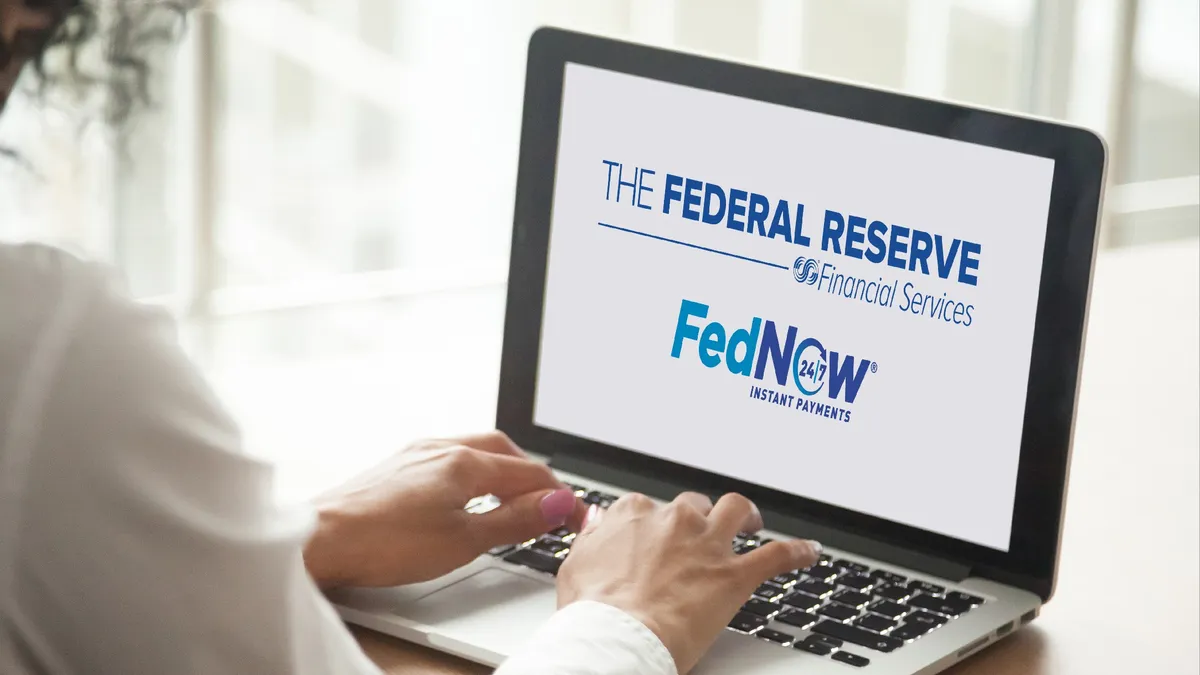In today’s innovative financial services landscape, businesses and consumers have many options for making everyday payments. A new survey released by the Federal Reserve shows that among all the choices, faster and instant payments are growing in demand, with a majority of business owners and consumers already using them1. Moreover, more than seven in 10 businesses and consumers say they prefer to access faster payment services — instant payments and same-day ACH, among them — through their primary bank.
That’s just one of the reasons why the Federal Reserve’s FedNow Service is off to such a strong start since launching nearly a year ago. The FedNow Service enables financial institutions (banks and credit unions) to offer new services for instant payments, such as for paying bills, sending money to friends and family, offering earned wage access, transferring funds between accounts, and much more, all in a matter of seconds, on a safe and efficient network. The service was launched nearly a year ago with 35 participating financial institutions and has grown to over 700, with more joining each month.
“The industry has shown enthusiasm and support for the FedNow Service, and financial institutions are saying they appreciate the flexibility the service offers,” says Shonda Clay, executive vice president and chief of product and relationship management at Federal Reserve Financial Services (FRFS).
FRFS recently established the FedNow User Group to provide continuous and transparent collaboration between the Federal Reserve and the financial institutions actively using the service.
Among the goals of that partnership is to elicit feedback on the use cases for the FedNow Service and how they can be expanded or improved upon. One of the most popular is account-to-account funds transfers. This occurs, for example, when a customer moves money from a brokerage account to a bank account, or transfers funds between two different financial institutions.
Earned wage access is another use case that is growing in popularity. This enables an employer to pay a gig or hourly worker the money they’ve earned at the end of their shift or at the end of the day rather than wait for another pay cycle. Not only does this give workers more control and flexibility with their finances, but it’s an effective retention tool for employers as well.
Instant payments through the FedNow Service can also enable insurance companies to pay claims more quickly.
“It’s an incredible benefit for a consumer to receive insurance funds when they need the money most,” says Clay. “And insurance companies can benefit from having a competitive differentiator and satisfied policyholders.”
Even with these use cases, and more on the way, some banks are watching developments in the instant payment landscape as they consider adoption. At the same time, many small banks rely on their service provider to get the FedNow Service up and running. Clay says the Federal Reserve is collaborating with these third-party providers to help them onboard financial institutions more quickly.
Other financial institutions that have yet to launch the FedNow Service want to better understand how they can avoid potential fraud. In addition to financial institutions’ practices as the first line of defense against fraud, the FedNow Service continues to introduce new security controls.
For instance, the FedNow Service recently highlighted two new risk management features being rolled out this year and next. Clay says the new capabilities will complement financial institutions’ own fraud risk management practices and will be added to the set of fraud mitigation tools already available through the FedNow Service.
One of the features will give financial institutions the ability to establish thresholds to reject payments that exceed a cumulative amount or frequency. This will enable a financial institution, for example, to detect someone sending a high number of low-value transactions as a way to remain undetected. The feature allows financial institutions to customize the service based on whether the customer is a business customer or a new account holder, for instance.
Another upcoming feature will enable participating institutions that settle payments for other participants to set net send limits for these institutions, which provides liquidity management control.
“These controls add another layer of protection at the network level to what financial institutions are already doing, and we are continuing to build out a full suite of tools over time that will add even more safeguards,” Clay says.
New features and functionality for the FedNow Service will continue to be added over time. And the FedNow User Group, says Clay, will help ensure the service continues to meet the evolving needs of participating institutions. Interested financial institutions and service providers can learn more on FedNow Explorer.
1 Federal Reserve surveys: U.S. businesses, consumers increasingly adopt faster and instant payment services; May 6, 2024











